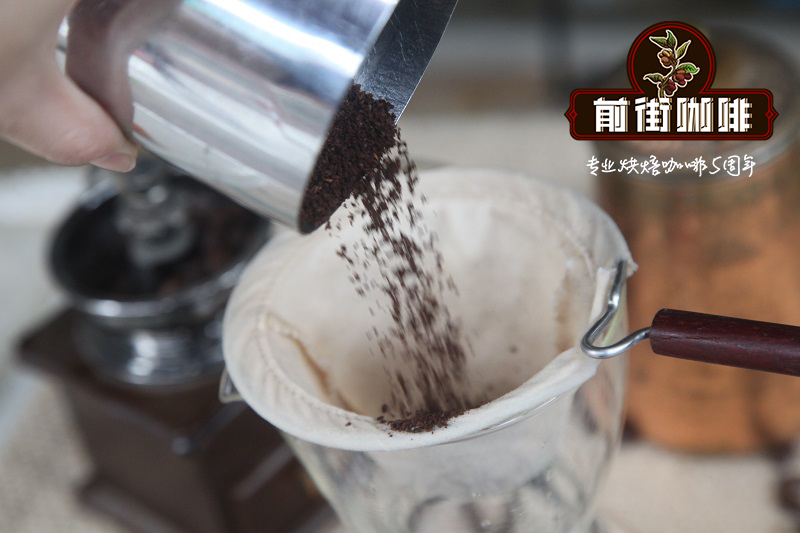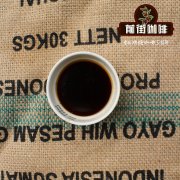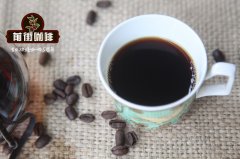Introduction to the taste of coffee beans at Manor San Marcellino in El Salvador-how to make coffee beans in El Salvador

Professional coffee knowledge exchange more coffee bean information please follow the coffee workshop (Wechat official account cafe_style)
Introduction to the taste of El Salvador coffee beans
This Salvadoran coffee from San Marcellino has aromas of cream, caramel and roasted hazelnuts, with a hint of cedar, roasted with creamy maltose and caramel, a hint of jasmine, bright and pure, acidity of green apple and black vinegar millet, obvious dark chocolate bitterness, stable and gentle taste, fruity finish and bitter dark chocolate on the finish.
The manor family in El Salvador has been in business for fifty years. About 780 farmers across the country are engaged in planting and marketing. The main producing areas are located near volcanoes in Mount Balsamo Mountain Range and San Salvador (Volcano of San Salvador). In terms of sales, the manor provides corporate loans, planting technical guidance and financial support. In order to improve the productivity of farmland, the manor will also provide fertilizers and raw materials to farmers in a preferential way.
Arabica coffee is grown in El Salvador mainly from commercial varieties, including Bourbon, Pacas, Pacamara, and Red Katuai. Among them, bourbon species and Pacas account for about 83% of the planting area.
El Salvador coffee has a unique flavor, sweet and sour taste with a mellow taste, enjoy outstanding international praise, but also quite loved by the local people. Borgonovo currently provides raw beans of HG grade, with a planting height of 800-1200 meters above sea level, of which 50% of 60% of the mesh is 17. On the other hand, the planting height of raw beans of SHG grade is more than 1200 meters, and the number of raw beans is 17 mesh.
How to flush Salvadoran coffee beans?
As for the way of brewing, hand brewing and siphon brewing are the best. When grinding beans, you can smell the flowers and fruit, the sweetness is obvious.
According to our experience, the main differences before brewing Salvadoran coffee are baking degree and altitude, and baking date.
In principle, the temperature of deep baking can be lower, and the shallower the temperature of baking can be higher.
For example, shallow baked beans, longer time, rough grinding, the beans themselves are sour, and if you like bitter or sour, you can try it at a higher temperature. Of course, those aromatic lipids do give off more aroma when the temperature is high, but sometimes it is accompanied by the destruction of certain flavors.
Of course, the cooking temperature is not too fixed, which can be determined according to your personal taste or the degree of baking of the beans.
The common method of Salvadoran coffee: three-stage style
Three-stage water injection method
To inject a section of water into three stages.
Suitable for light, medium and medium roasted coffee beans
Use filter cup V60
Increase the steaming time or water cut-off times to improve the rich taste of the coffee.
Degree of grinding-small Fuji 3.5, sugar size
Segmented extraction method of three-stage water injection
The layers are richer, and the flavor of the front, middle and back of the coffee can be clearly defined. The practice is to increase the amount of water each time after steaming, usually when the coffee liquid is about to drop to the surface of the powder layer, and use small, medium and large water flow to do three-stage extraction.
Reference for hand punching parameters:
Use V60 filter cup, 16 grams powder 32 grams of water steaming for 30 seconds, 89-90 degrees water temperature extraction, 1:15, medium and fine grinding small Fuji 3.5, the second water injection to 140ml cut off, wait for water drop and then slowly water injection, uniform speed, the water level should not be too high, again water injection to 220ml stop, extraction time 2:15 seconds-unique almond plum flavor and chocolate taste, we can fine-tune according to their own taste.
END
Important Notice :
前街咖啡 FrontStreet Coffee has moved to new addredd:
FrontStreet Coffee Address: 315,Donghua East Road,GuangZhou
Tel:020 38364473
- Prev

Yemeni Coffee Flavor | Yemen Mocha Yemeni Mocha Coffee | introduction of Mattari producing areas
Professional coffee knowledge exchange more coffee bean information Please pay attention to the coffee workshop (Wechat official account cafe_style) Yemeni mocha taste characteristics are more prominent, sour taste is obvious, it is easy to taste cocoa, the cocoa concentration emitted increases with the coffee concentration. Naturally, when making coffee, people will add hot cocoa to it.
- Next

Yemeni mocha ishmali production area introduction ancient method sun treatment method is what?
Professional coffee knowledge exchange More coffee bean information Please pay attention to coffee workshop (Weixin Official Accounts cafe_style) It is said that in the 17th century, Europeans first imported coffee and spread it to the whole world is the world's largest coffee port Mocha Port. Neighboring Ethiopia, which faces each other across the Red Sea, also exports coffee through Mocha Port, so Ethiopian sun-treated coffee is also often sold.
Related
- Detailed explanation of Jadeite planting Land in Panamanian Jadeite Manor introduction to the grading system of Jadeite competitive bidding, Red bid, Green bid and Rose Summer
- Story of Coffee planting in Brenka region of Costa Rica Stonehenge Manor anaerobic heavy honey treatment of flavor mouth
- What's on the barrel of Blue Mountain Coffee beans?
- Can American coffee also pull flowers? How to use hot American style to pull out a good-looking pattern?
- Can you make a cold extract with coffee beans? What is the right proportion for cold-extracted coffee formula?
- Indonesian PWN Gold Mandrine Coffee Origin Features Flavor How to Chong? Mandolin coffee is American.
- A brief introduction to the flavor characteristics of Brazilian yellow bourbon coffee beans
- What is the effect of different water quality on the flavor of cold-extracted coffee? What kind of water is best for brewing coffee?
- Why do you think of Rose Summer whenever you mention Panamanian coffee?
- Introduction to the characteristics of authentic blue mountain coffee bean producing areas? What is the CIB Coffee Authority in Jamaica?

